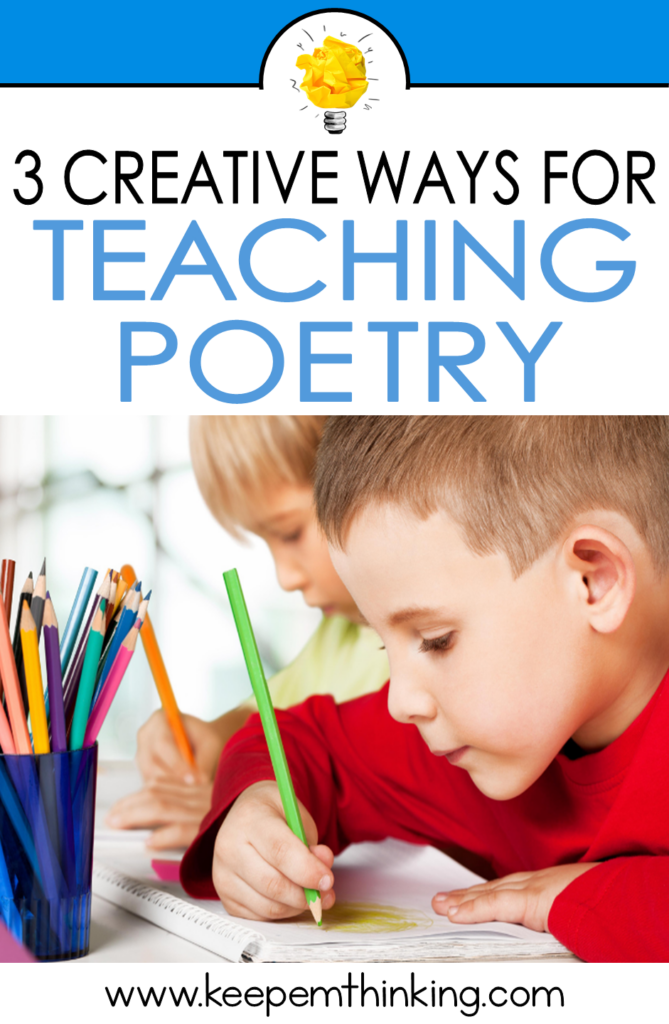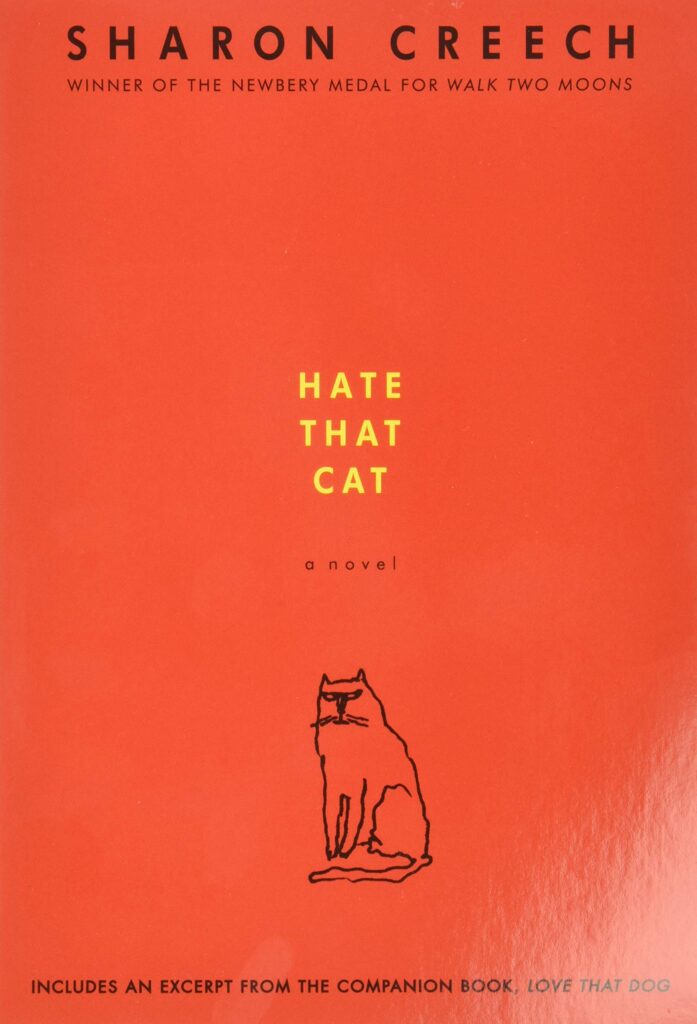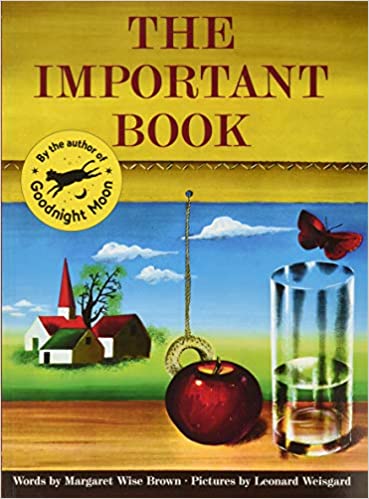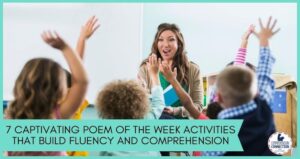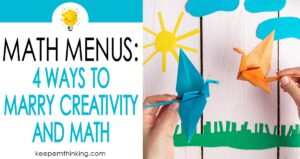Did you know April is National Poetry Month? So, if you haven’t tackled teaching poetry in your classroom yet, this is a perfect time! Here are 3 creative ways for teaching poetry that your students will love!
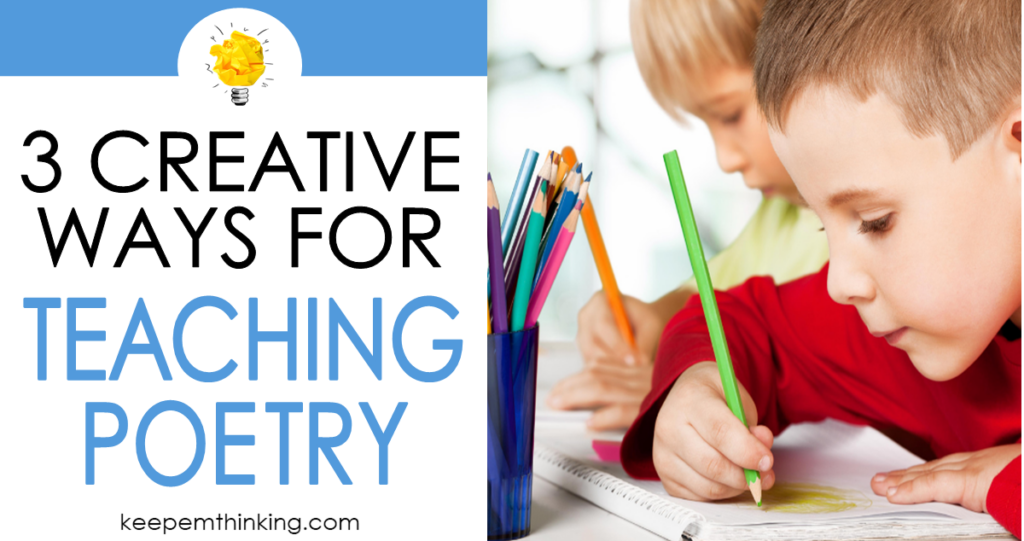
Want to teach poetry to your students but not sure where to start? You are not alone! Should you focus on reading poetry or writing poetry? What about both? These strategies and activities are a great way to get your unit underway and bring out your students’ creativity!
Setting Up For Poetry Success
Before jumping into any poetry activities, there were a few things I always made sure to do to set my students up for success. Going from writing narratives to writing poetry can be a big leap for little minds. By exposing students to poetry through reading and modeling, they are more likely to have an easier time making that leap.
Reading Poetry

Before I would ask my students to write their own poetry, I always made sure to expose them to poetry through reading. During our read-aloud time or during our reading lesson block, I would read a short story written in verse. We would then discuss how the story was different from other stories that they read, and I would explain that the book was written like poetry.
Throughout the rest of our poetry unit, I would continue to read stories in verse and a variety of poems so that students could hear how poetry sounds.
One of my favorite ways to read poetry and engage students in learning about poetry is through two novels by Sharon Creech. Love that Dog and Hate that Cat are novels written in poem form, filled with poetry, and have a way of making students excited about poetry. The best part about these books is that they are all about Jack, a young boy who isn’t very excited to learn about poetry at school. The students connect with Jack as he learns to read, understand and write his own poetry.
I highly recommend checking these books out for your poetry unit or as a fun read aloud!
Modeling Poetry
Once students had the chance to hear poetry, the next step I took in teaching poetry was to always model how to write poetry. Whatever type of poetry I wanted my students to write, I always wrote an original poem for them and walked them through my thought process.

For example, if I wanted my students to try writing Haikus (one of my favorite ways to teach poetry!), I would read a few to them, explain the structure, and then brainstorm ideas for my own poem out loud.
From here, I would use my brainstormed ideas to craft a Haiku on the board so that they could see the process in action. I made sure to not always get it 100% right the first time so that I could show them how to go back and revise in order to meet the requirements of that poetry type as well as how to improve their ideas.
Once we had begun reading poetry and I had modeled poetry, we would jump into my favorite part, writing poetry! This is where the creativity of teaching poetry really gets to shine!
Creative Way for Teaching Poetry: I AM Poems
I AM poems are a great way to get your students to write poetry. And . . . it just might be one of the easiest poems to write because students are writing about themselves! These are personal poems where the author describes themselves through a series of prompts or sentence starters.

This setup makes I AM poems perfect for teaching poetry to students who don’t have a lot of experience with writing it. They simply have to fill in the prompts with information about themselves.
When I was teaching poetry writing, I always started with these poems since they were low-pressure. Students were given the structure and they only had to worry about describing themselves versus an abstract concept. I AM poems were also great for sharing. Students got to learn things about one another, and they got to practice reading their poems out loud.
Some sentence starters that I liked to include were:
- I am…
- I feel…
- I see…
- I dream…
Once students had the hang of this poetry structure, I would challenge them by having them write I AM poems from someone else’s perspective. Typically, I would have students write a poem from the perspective of the main character of a book we were reading as a class or from the book they were reading on their own. They were a fun and engaging way for students to explore character traits (Want more fun character trait activities? Check out this post!).
You know me and my love for using books when I teach. So it should come to no surprise to know that I have a great book for teaching personal poems. The Important Book by Margaret Wise Brown is a wonderful book to use when teaching personal poems. In this book, Margaret Wise Brown helps readers see that there is something important about everything. Using common items we see and use everyday, students learn to find something important.
After reading the book, I challenge students to write a poem, in similar style, about themselves. Studnets will start and end with something important about themselves.
Creative Way for Teaching Poetry: Bio Poems
Bio poems are a great next step after your students have the hang of writing I Am poems. These poems also ask them to write about themselves but are usually less structured than I Am poems.
Students are asked to share information about themselves in a free-form poem. For those students who might still need prompts, you can easily give them prompts related to themselves to use throughout the writing process.
Some things you can encourage students to add to their poems include:
- Age
- Siblings
- Likes and dislikes
- Personality traits
- Fears
- Dreams
Since you can let students decide how to structure their poems, they are offered a lot of creative freedom and each one will be unique.
I love to pair these poems with an art lesson in drawing self-portraits. You might find that the art teacher is willing to collaborate with your as you work on this project. But don’t worry, if you don’t have an art teacher and you aren’t overly artistic yourself, there are lots of resources online. Here’s just one of many videos you can use.
Creative Way for Teaching Poetry: Haikus
Once students have had a chance to write poetry about themselves in a semi-structured format, I like to introduce Haiku writing. Haikus have a very structured format that students must follow. I always began by introducing this format, because without it, the poem is not really a haiku. Haikus are three line poems with a specific syllable count on each line. The first line has 5 syllables, the second line has 7, and the last line has 5.
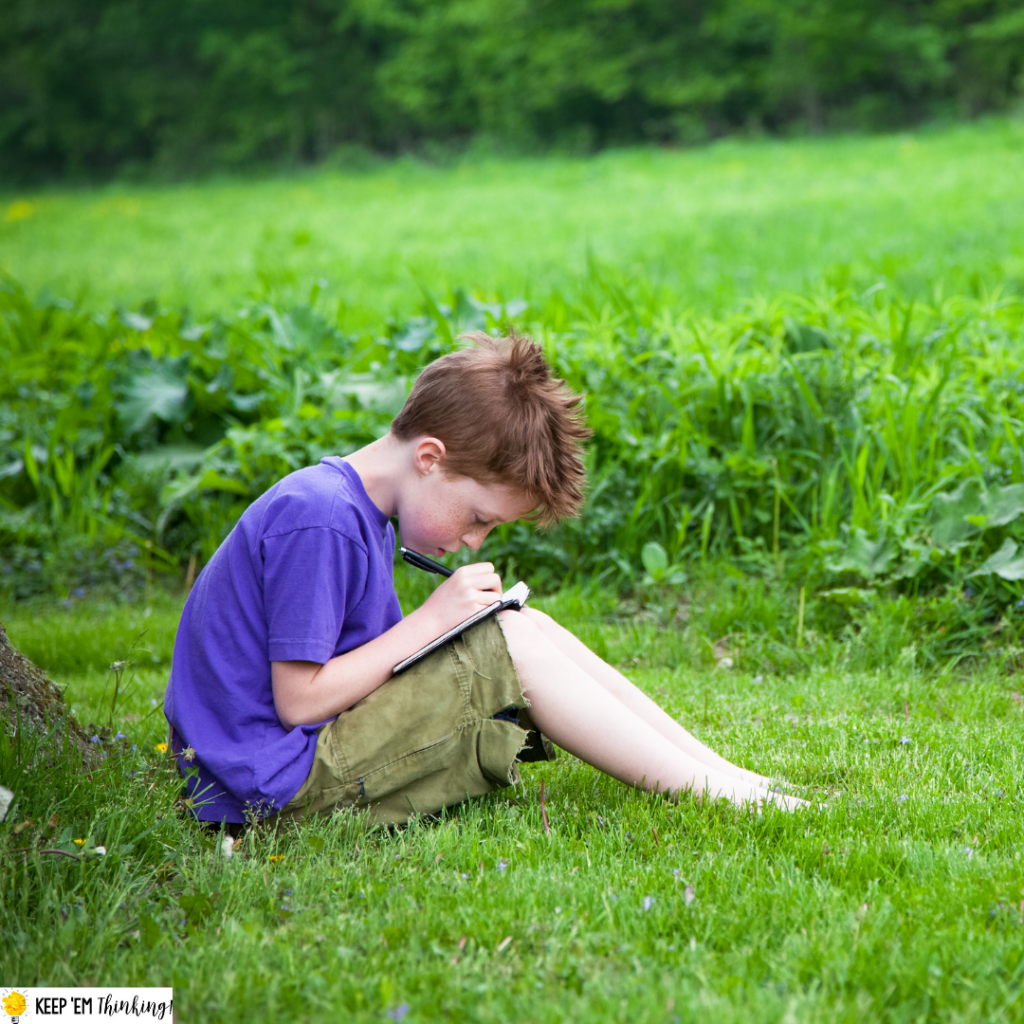
Since Hakius are meant to be about the beauty of nature, I liked to take a walk outside or watch a nature documentary for inspiration. I would have students write down what they saw using descriptive language.
Then I would have students highlight some of the descriptions they wrote. From these descriptions, students circled specific words to use in their poems. They used these words to craft their Haiku.
Once poems were complete, I would have students create art that represented their poems so that we could display the Haikus and artwork around the classroom.
Looking For More Resources for Teaching Poetry?
While these 3 ideas are great for getting started, there’s so much more you can do with teaching poetry. I have found all of these ideas to work well in the upper elementary classroom. However, if you are working with younger students acrostic poems and simple rhymes work well. Older students like trying their hand at limericks. And connecting poetry to music lyrics is always a hit with upper elementary and middle school students. If you are looking for more poem structure ideas, Read Write Think has some great resources!
Save it for Later
Be sure to pin this to your favorite classroom Pinterest board, so you’ll be all set and ready to go with fun and engaging ways to teach poetry.
